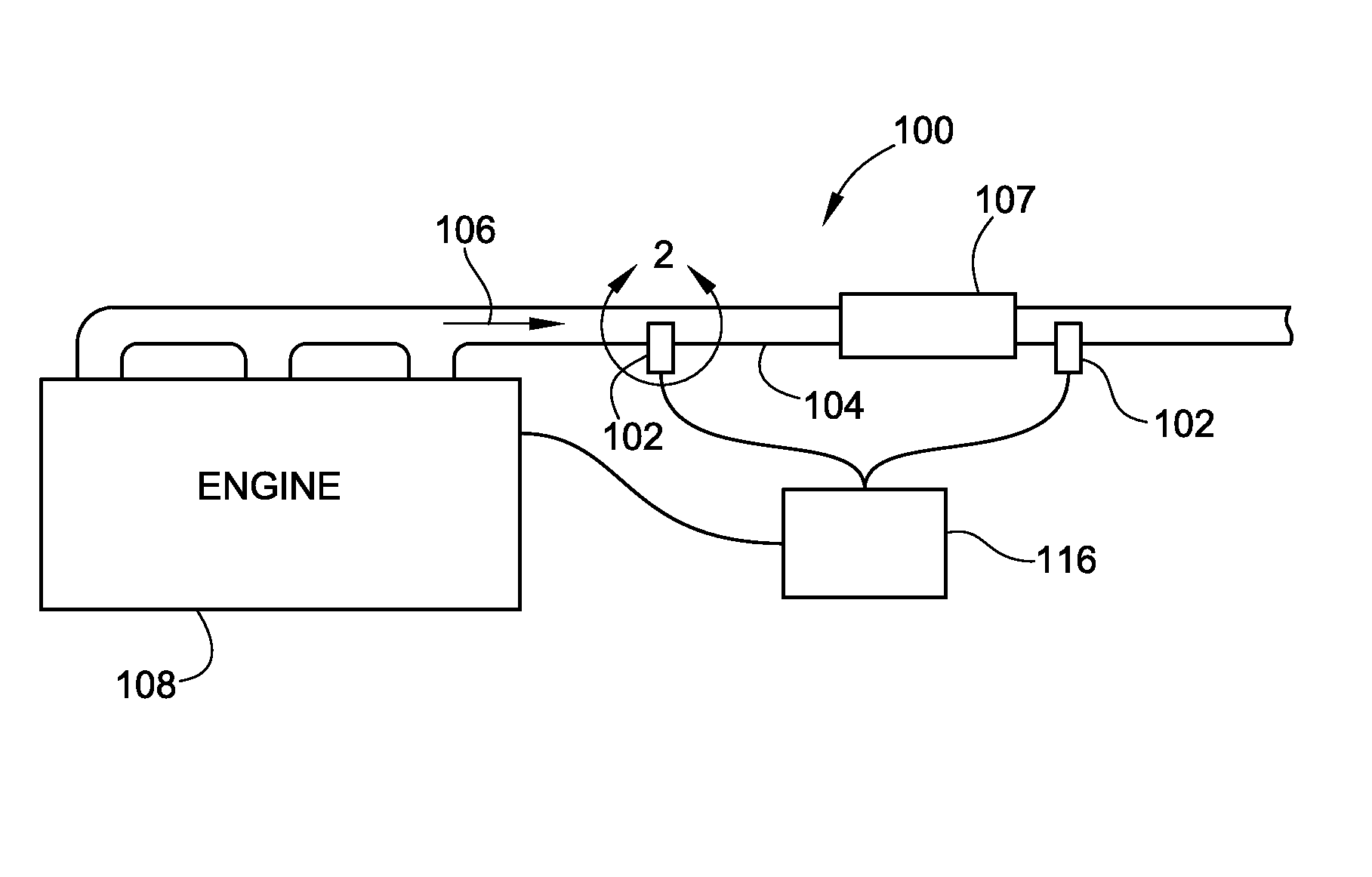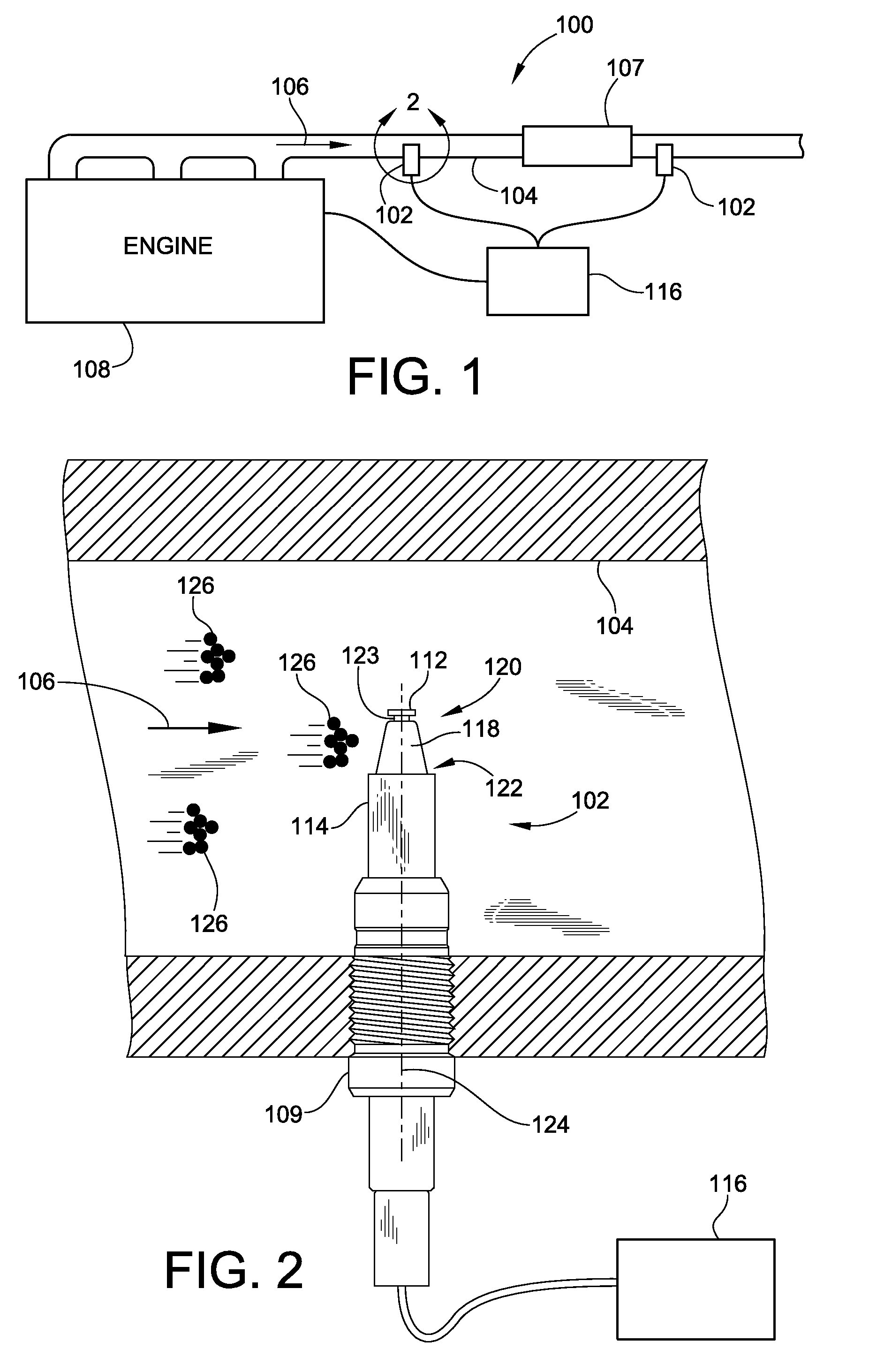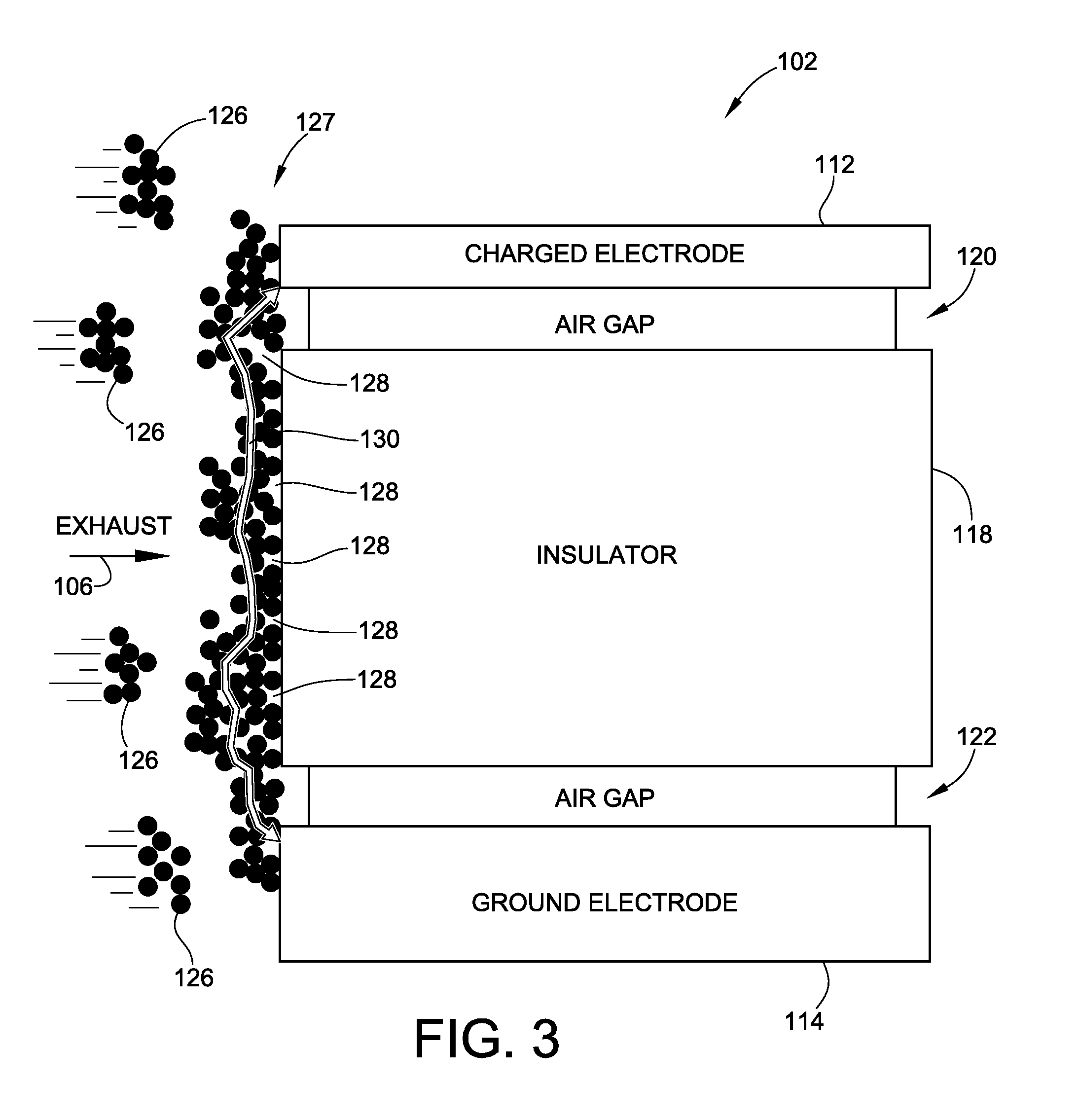Surface gap soot sensor for exhaust
a soot sensor and surface gap technology, applied in the direction of instruments, electrical control, combustion types, etc., can solve the problems of engine thermal efficiency decline, exhaust gases experience a significant pressure drop passing through the increasingly restrictive filter, and problems such as problems, to achieve the effect of preventing current flow
- Summary
- Abstract
- Description
- Claims
- Application Information
AI Technical Summary
Benefits of technology
Problems solved by technology
Method used
Image
Examples
Embodiment Construction
[0040]FIG. 1 is a simplified schematic representation of an embodiment of a particulate sensor arrangement 100 (also referred to herein as a “soot sensor arrangement 100”) according to the teachings of the present invention. As used here in “particulates,”“particles,” and “soot” are generally synonymous for purposes of understanding the embodiments of the present invention. The soot sensor arrangement 100 includes a sensor 102 mounted within an exhaust pipe 104. Exhaust 106 (illustrated as arrow 106) flowing through the exhaust pipe 104 generated by engine 108 impinges on the sensor 102 and the sensor provides feedback as to the concentration of particulate matter within the exhaust flow 106. While the sensor is illustrated in an exhaust pipe 104, the sensor 102 could be used in other locations along the exhaust flow path, such as within the exhaust manifold, downstream of any boost device or downstream from a DPF 107.
[0041]As illustrated in FIG. 1, a plurality of sensors 102 may be...
PUM
 Login to View More
Login to View More Abstract
Description
Claims
Application Information
 Login to View More
Login to View More - R&D
- Intellectual Property
- Life Sciences
- Materials
- Tech Scout
- Unparalleled Data Quality
- Higher Quality Content
- 60% Fewer Hallucinations
Browse by: Latest US Patents, China's latest patents, Technical Efficacy Thesaurus, Application Domain, Technology Topic, Popular Technical Reports.
© 2025 PatSnap. All rights reserved.Legal|Privacy policy|Modern Slavery Act Transparency Statement|Sitemap|About US| Contact US: help@patsnap.com



